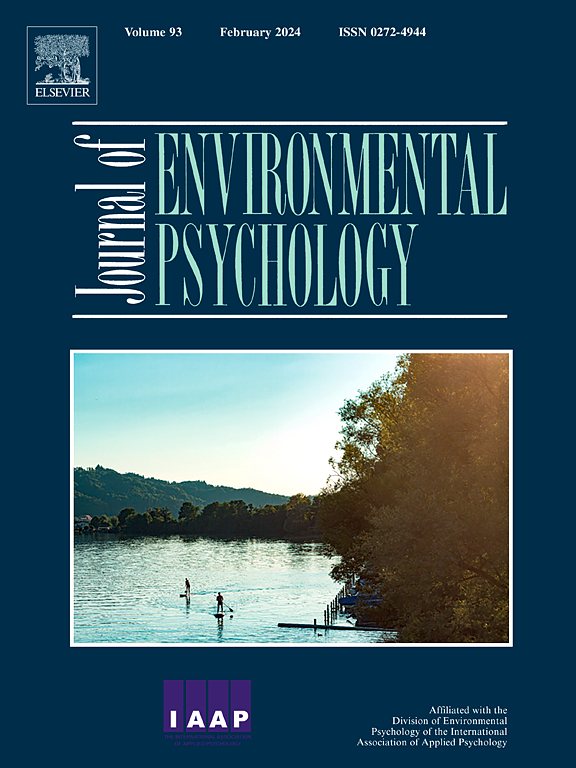Cognitive bias in perceived concern with rainfall: Implications for climate adaptation
IF 7
1区 心理学
Q1 ENVIRONMENTAL STUDIES
引用次数: 0
Abstract
Rainfall data usually comprise large sets of complex information, with data points spread across both time and space. To be understood, such environmentally significant data must be integrated—but distribution shapes can bias this integration process. Distribution biases can lead to differing levels of concern with rainfall, and in turn, alter the perceived importance of climate adaptation measures. In three experiments, participants reported greater concern about rainfall and reported stronger climate adaptation intentions when rainfall distributions were negatively skewed compared to positively skewed, even though both distributions contained identical total rainfall. This cognitive bias from skewed distributions persisted in both retrospective judgments of entire stimulus sets, and in evaluations of additional instances of rainfall, and it depended on foreknowledge of stimulus context (i.e., the shape and endpoints of the distribution). The results demonstrate how cognitive bias can influence the formation of environmental attitudes.
对降雨的认知偏差:对气候适应的影响
降雨数据通常包含大量复杂的信息,数据点分布在时间和空间上。要理解这些具有重要环境意义的数据,就必须对其进行整合,但分布形状可能会影响这一整合过程。分布偏差可能导致对降雨的不同程度的关注,进而改变人们对气候适应措施重要性的认识。在三个实验中,当降雨分布呈负偏斜时,参与者报告了更大的对降雨的关注,并报告了更强的气候适应意愿,尽管两种分布包含相同的总降雨量。这种来自偏态分布的认知偏差在对整个刺激集的回顾性判断和对额外降雨实例的评估中都存在,它依赖于对刺激上下文的预知(即分布的形状和端点)。研究结果表明,认知偏见如何影响环境态度的形成。
本文章由计算机程序翻译,如有差异,请以英文原文为准。
求助全文
约1分钟内获得全文
求助全文
来源期刊

Journal of Environmental Psychology
Multiple-
CiteScore
10.60
自引率
8.70%
发文量
140
审稿时长
62 days
期刊介绍:
The Journal of Environmental Psychology is the premier journal in the field, serving individuals in a wide range of disciplines who have an interest in the scientific study of the transactions and interrelationships between people and their surroundings (including built, social, natural and virtual environments, the use and abuse of nature and natural resources, and sustainability-related behavior). The journal publishes internationally contributed empirical studies and reviews of research on these topics that advance new insights. As an important forum for the field, the journal publishes some of the most influential papers in the discipline that reflect the scientific development of environmental psychology. Contributions on theoretical, methodological, and practical aspects of all human-environment interactions are welcome, along with innovative or interdisciplinary approaches that have a psychological emphasis. Research areas include: •Psychological and behavioral aspects of people and nature •Cognitive mapping, spatial cognition and wayfinding •Ecological consequences of human actions •Theories of place, place attachment, and place identity •Environmental risks and hazards: perception, behavior, and management •Perception and evaluation of buildings and natural landscapes •Effects of physical and natural settings on human cognition and health •Theories of proenvironmental behavior, norms, attitudes, and personality •Psychology of sustainability and climate change •Psychological aspects of resource management and crises •Social use of space: crowding, privacy, territoriality, personal space •Design of, and experiences related to, the physical aspects of workplaces, schools, residences, public buildings and public space
 求助内容:
求助内容: 应助结果提醒方式:
应助结果提醒方式:


